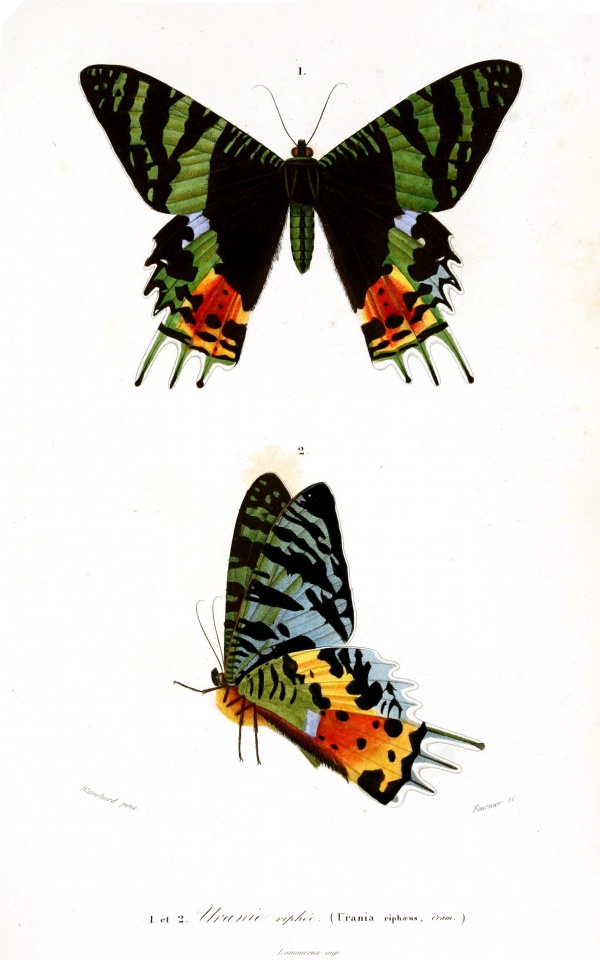Facts About Chrysiridia rhipheus
The Madagascan sunset moth, scientifically known as Chrysiridia rhipheus, is a dazzling and colorful day-flying moth in the Uraniidae family. This captivating insect is highly sought after by collectors and is frequently featured in publications about Lepidoptera. With a wingspan of 7-9 cm, it is native to Madagascar and can be observed year-round on the island. Female moths lay their eggs on the leaves of Omphalea plants, and the resulting caterpillars, which have distinctive red feet and black spots, feed on these plants. The caterpillars also produce silk to help them climb and cling to smooth surfaces.
First described as Papilio rhipheus by Dru Drury in 1773, the Madagascan sunset moth has since undergone taxonomic revisions and is now classified in the genus Chrysiridia. This genus is primarily African and includes only one other species, Chrysiridia croesus. The moth's brilliant wing colors are not derived from pigments but from the interaction of light with the microstructure of its wing scales.
Found exclusively in Madagascar, the Madagascan sunset moth migrates between isolated populations of its host plant, Omphalea spp. The moth has continuous generations throughout the year, with population peaks from March to August. The caterpillars go through several stages, spin cocoons, and eventually metamorphose into adults. These moths are diurnal, migrating, and feeding on nectar from white or whitish-yellow flowers.
The unique microstructure of the Madagascan sunset moth's wings makes it a fascinating subject for optical science research. Its reliance on the Omphalea plant and the intricate ecological relationships in Madagascar highlight the complex interplay between species in this unique environment.
